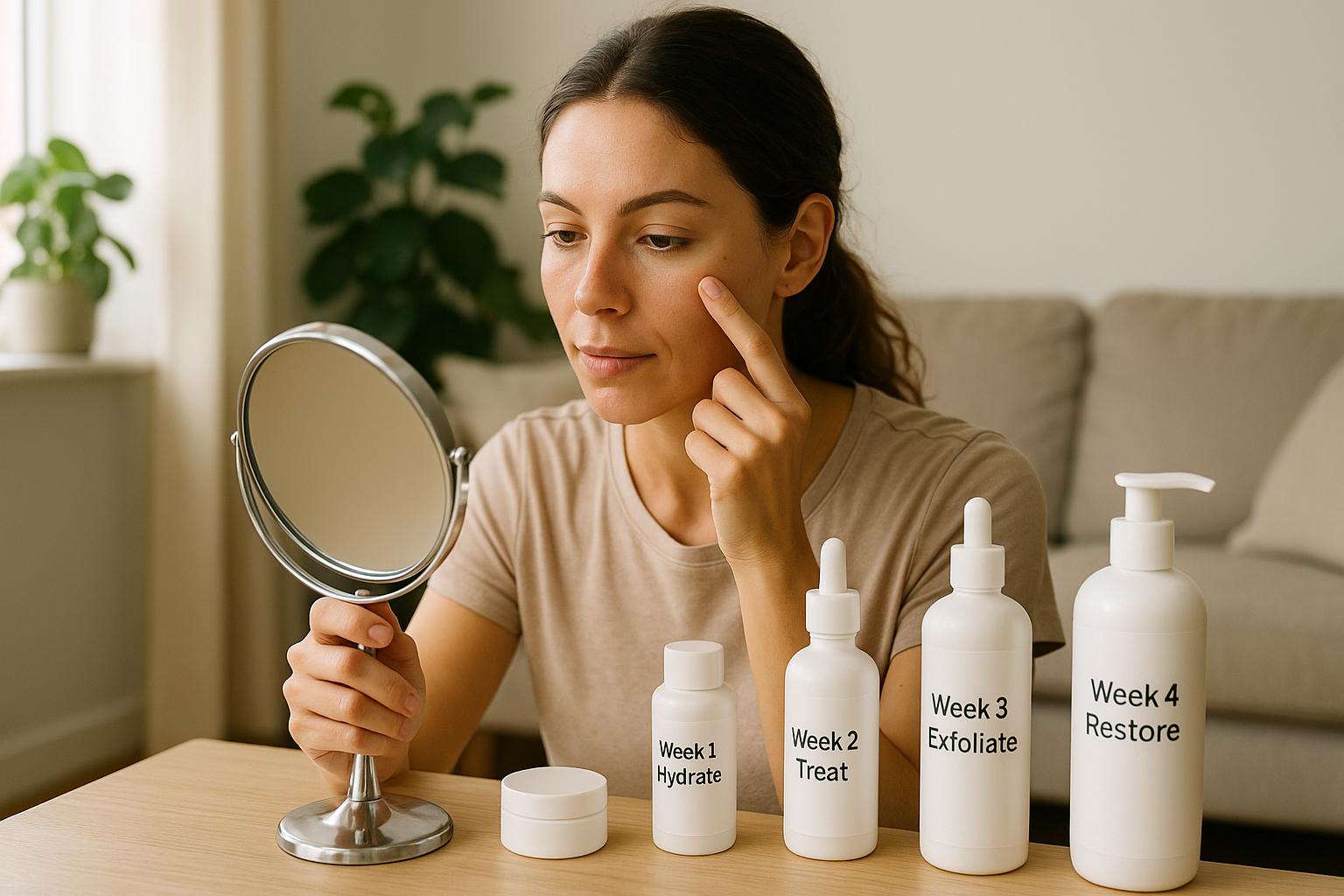Hormones have a profound effect on your skin — especially throughout your menstrual cycle. While some days your skin may feel clear and glowing, others may bring unexpected breakouts, oiliness, or sensitivity. Understanding these fluctuations allows you to adjust your skincare routine and provide exactly what your skin needs during each phase.
In this comprehensive guide, we’ll explore how hormonal changes — especially during PMS — affect your skin and how to tailor your routine accordingly. Whether you’re managing acne, dullness, or dryness, this guide will help you work with your hormones, not against them.
How Hormones Impact Your Skin
The menstrual cycle is divided into four key phases, each influencing hormone levels — particularly estrogen, progesterone, and testosterone. These hormonal shifts affect oil production, inflammation, moisture levels, and skin texture.
1. Menstrual Phase (Days 1–5)
🔄 What Happens:
- Estrogen and progesterone are at their lowest.
- Skin may feel dry, dull, or sensitive.
- Inflammatory breakouts may linger from PMS.
🧴 Skincare Focus:
Calming + Hydrating
Recommended Routine:
- Gentle cleansing: Use a cream or gel cleanser to avoid stripping.
- Hydrating toner: Choose one with rose water, glycerin, or chamomile.
- Soothing serums: Niacinamide or hyaluronic acid help reduce redness and boost moisture.
- Barrier-strengthening moisturizer: Look for ceramides or panthenol.
- SPF 30+: Always, even if staying indoors.
Avoid strong acids or retinoids during this time if your skin is feeling irritated.
2. Follicular Phase (Days 6–14)
✨ What Happens:
- Estrogen begins to rise.
- Skin looks brighter, clearer, and more elastic.
- Collagen production and cell turnover increase.
🧴 Skincare Focus:
Glow Boosting + Exfoliation
Recommended Routine:
- Cleanser: Use a gentle foaming cleanser.
- Exfoliate 2–3x/week: Use lactic acid or a mild AHA for radiant skin.
- Brightening serum: Vitamin C or niacinamide helps even tone.
- Lightweight moisturizer: Hydrate without heaviness.
- SPF: Still non-negotiable.
This is a great time to introduce active treatments — your skin is stronger and more resilient.
3. Ovulation Phase (Days 15–17)
🌟 What Happens:
- Estrogen peaks, while testosterone rises.
- Increased oil production may lead to clogged pores or early breakouts.
🧴 Skincare Focus:
Balancing + Preventing Breakouts
Recommended Routine:
- Cleanser: Use a salicylic acid or tea tree oil cleanser to reduce bacteria and excess oil.
- Toner: Witch hazel or niacinamide-based toners help reduce pore size.
- Spot treatment: Use benzoyl peroxide or salicylic acid on breakout-prone areas.
- Oil-free moisturizer: Stay hydrated without clogging pores.
You might notice a natural glow — just balance it by keeping pores clean and minimizing heavy makeup.
4. Luteal Phase (Days 18–28)
😣 What Happens:
- Progesterone rises, leading to oilier skin and clogged pores.
- PMS symptoms may cause inflammation and acne.
- Mood swings and stress increase cortisol, impacting your skin barrier.
🧴 Skincare Focus:
Detox + Calm
Recommended Routine:
- Double cleanse at night: Oil-based followed by gel cleanser.
- Clay mask (1–2x/week): Draws out impurities.
- Anti-inflammatory serum: Niacinamide, zinc, or green tea extract.
- Lightweight moisturizer: Avoid anything too occlusive.
- Avoid new actives: Stick to calming ingredients during PMS.
You may also benefit from reducing sugar, dairy, and processed foods during this phase — these can worsen hormonal acne.
Lifestyle Habits That Help During Hormonal Changes
Your skincare routine is crucial, but internal habits also make a big difference.
🧘♀️ Manage Stress
Chronic stress increases cortisol, which inflames the skin and leads to breakouts.
Tips:
- Try meditation or deep breathing.
- Get regular sleep.
- Engage in light exercise like walking or yoga.
🥗 Support Your Cycle with Nutrition
Foods rich in zinc, omega-3s, and antioxidants help balance hormones and improve skin resilience.
Best foods:
- Leafy greens
- Berries
- Pumpkin seeds
- Avocados
- Fatty fish
💊 Track Your Cycle
Use a menstrual tracking app to anticipate changes in your skin and adjust your skincare proactively.
Do’s and Don’ts for PMS Skincare
| ✅ Do’s | ❌ Don’ts |
|---|---|
| Keep your skin hydrated | Pick or squeeze pimples |
| Use soothing ingredients during breakouts | Over-exfoliate when skin feels oily |
| Be consistent with your routine | Switch products constantly during flare-ups |
| Listen to your skin’s needs each phase | Skip SPF just because it’s cloudy |
| Use calming masks when inflamed | Use heavy oils or thick creams if acne-prone |
Skincare Products to Have on Hand
- Micellar water (for gentle cleansing)
- Hydrating mist (for midday refresh)
- Clay mask (for oil control)
- Salicylic acid serum (for prevention)
- Soothing cream (for PMS irritation)
When to Seek a Dermatologist
If hormonal breakouts become severe, cystic, or painful, a dermatologist can recommend prescription treatments such as:
- Topical retinoids
- Oral contraceptives
- Anti-androgen medications (like spironolactone)
They may also help create a long-term plan tailored to your cycle.
Conclusion: Cycle-Aware Skincare Is Smart Skincare
Your skin doesn’t operate the same way every day — and neither should your skincare. By understanding the hormonal changes of your menstrual cycle, you can give your skin exactly what it needs during each phase.
Whether it’s hydration during your period, exfoliation after, oil control during ovulation, or calming care during PMS, small adjustments go a long way.
🌙 Honor your skin’s natural rhythm, and it will reward you with balance, clarity, and glow — all month long.
